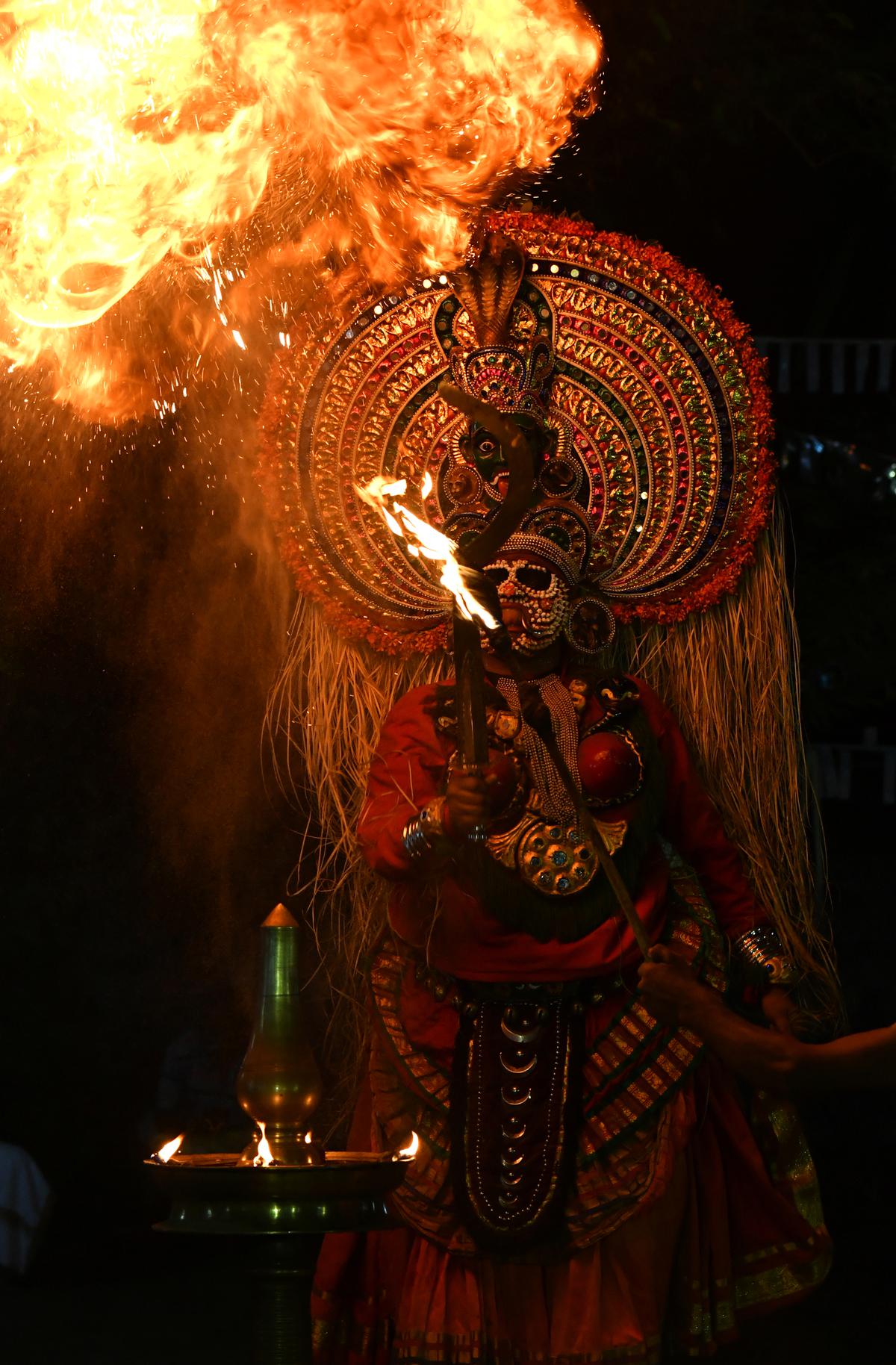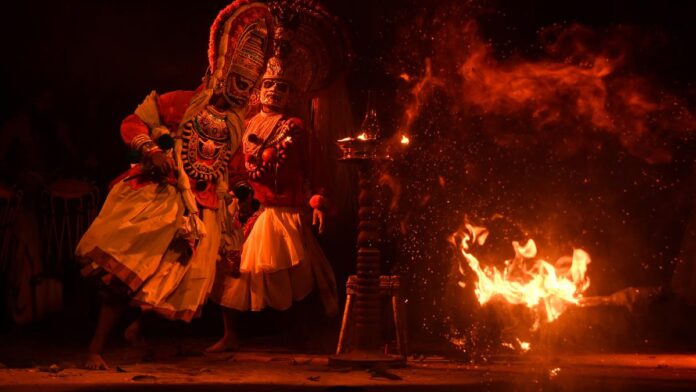Thousands of swans, big and small, congregate for the Neelamperoor Annam Padayani, a festival of the Palli Bhagavathy temple at Neelamperoor in Alappuzha district. These swans, some of them as tall as 40 feet, are entirely handmade using materials from nature such as psuedostem of plantain, lotus leaves, and ixora flowers.
Though the legend of the temple involves Goddess Kali killing demon Darika, the padayani is believed to have its roots in an episode in the Mahabharata. Bhima, on his quest to find the extraordinarily fragrant kalyanasougandhikam flower (white garland lily), reached Kubera’s Sougandhika lake where the flowers bloomed. Adding to its mystic charm were beautiful swans swimming about in the lake.
The Neelamperoor Padayani, held in the month of Chingam, is a festival that is rooted in Kerala’s agricultural history.
Cult Culture Agriculture, a series of videos produced by the Agricultural Technology Information Centre of the Kerala Agricultural University (KAU), delves into Kerala’s folklore and ritualistic art forms that are inextricably linked to its agricultural history.

Mudiyettu
| Photo Credit:
THULASI KAKKAT
“Through this series, we have been studying and documenting rituals, folklore and folk art forms in relation to the agricultural history of Kerala. Over the past three years, we have released over 30 videos on various traditional folk art forms such as kuthiyottam, mudiyeduppu, arjunanritham, mudiyettu and kannyarkali to mention a few,” says Sreevalsan J Menon, Carnatic musician, actor and professor at KAU, who has directed the videos.
Almost all the folk art forms owe their origins to Kerala’s agricultural history and practices, he adds. While documenting them, one is simultaneously opening a door to Kerala’s agrarian past. Sreevalsan is accompanied by Manoj Kuroor, associate professor and HOD, PG and research department of Malayalam, NSS Hindu College, Changanassery and B Ravi Kumar, ritualistic art historian as co-investigators of the project.
Funded by the Kerala State Planning Board, the project aims to build bridges between the academic world, the farming community and the general public.
“Festivals across religions in Kerala use large quantities of agricultural produce – be it in the form of fruit, leaves, or grain. Where do they source these products from? How are the farmers able to supply such quantities? A project like this leads us to questions such as these,” Sreevalsan adds.
Pooram Padayani ritual held at the Neelamperoor Palli Bhagavathi temple
| Photo Credit:
VISHNU PRATHAP
Going back to Padayani, the frames of the large effigies are made using arecanut trees. “The villagers of Neelamperoor say the arecanut trees found in the region are no longer the native variety. The KAU made arrangements to supply native varieties of arecanut trees to two Padayani kalaris (centres). This is how we can intervene,” Sreevalsan adds.
On the cultural front, the documentation has led to a renewed interest in folk art forms that have a dwindling number of practitioners. “Mayilpeelithookkam (also known as Arjuna nritham) has few practitioners; now there is an interest among the existing practitioners to teach younger people,” says Sreevalsan.
Farming cannot be extricated from Kerala’s evolutionary heritage, says OS Unnikrishnan, head of Folklore Academy. “All the ritualistic art forms are connected to man’s existence, which in turn was dependent on agriculture,” he adds. “Cult Culture Agriculture not just documents the art forms, but also takes note of the regional mores, practices, beliefs and culture sensitively.”
These art forms are a coming together of human effort, labour, art and spirituality and their connection to the soil, Unnikrishnan adds.
The videos, shot at a leisurely pace, are available on YouTube.
#Kerala #Agricultural #Universitys #video #series #documents #folklore #ritualistic #art #forms
